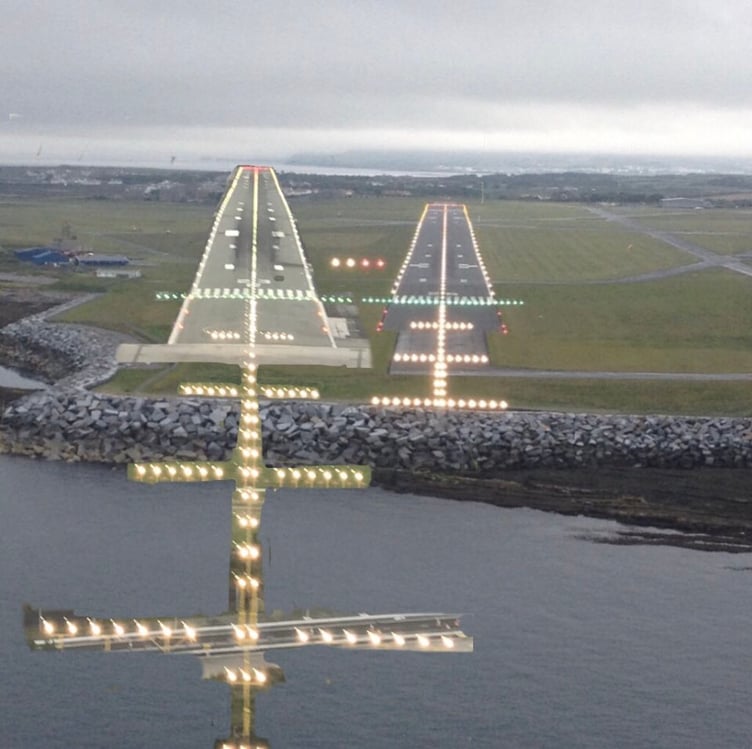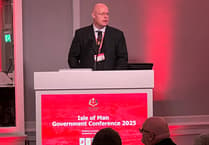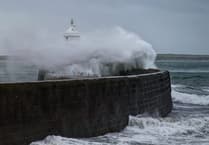An airline pilot believes that the number of flights being turned around from landing at Ronaldsway in poor weather is partly due to lack of investment at the airport.
Steve Bridson, former Manx Airlines captain and former Flybe pilot manager at Ronaldsway, said that ‘the main issue is the lack of approach lighting to the runway’.
The evening Gatwick to Ronaldsway EasyJet flight has been diverted on three occasions in the past month, and cancelled before departure on one occasion.
Early in the month there were also two other diversions, one Loganair flight from Liverpool and a charter Netjets flight from Manchester.
In providing this information, the government noted that poor visibility is only one meteorological reason why an aircraft may not land, with there also being ‘other meteorological reasons as well as operational and technical reasons’.
Unless the lighting system can be improved, Mr Bridson said that the situation with low-visibility disruptions will not get any better.
The Manx Independent last month reported on the predicament of Jenni Garret (sister of former Chief Minister Howard Quayle), who became stranded in Gatwick when her delayed flight was turned around due to fog at Ronaldsway, leaving her having to pay for her own overnight stay and new flights, before seeking compensation from EasyJet.
Mr Bridson described the current approach light system as being officially classed as ‘basic’, having been downgraded from ‘intermediate’ when approach lights were removed to make way for the runway extension in 2009.
He explained: ‘This means pilots now need at least 1,000 metres visibility to legally be allowed to make a landing attempt, whereas before the lights were removed it was 700 metres.
‘With the approach lights as they are now, in conditions of very low cloud, even if the required visibility is reported, when you reach decision height of 200 feet above the runway, you cannot see any approach lights and a missed approach is compulsory.
‘Nothing will really change until the approach lighting system is improved.’
The pilot showed two contrasting pictures of approach lights here and those at Manchester, taken from a ‘decision height’ of 200ft (the altitude at which pilots must decide whether to go ahead with a landing, or abort one) to demonstrate the difference that full lighting makes to the chances of being able to land.
Mr Bridson even created one scaled image of the Manchester runway superimposed next to Ronaldsway, to show how its basic system lacks the amount of lights extending out from the end of the runway, making it far less visible on approach.
He explained that as 200ft is also the point at which pilots must be able to see the runway or its lights to be able to legally continue to land, having more of such lights visible will increase the odds of this requirement being met.
Mr Bridson continued: ‘The cost and inconvenience of disrupted travel because of flight diversions or cancellations in low visibility conditions could be significantly reduced if the approach lighting was improved.
‘Money has been spent on projects that were frankly unnecessary, widening 300 metres of the runway last year being a prime example – a turning circle at the end of the runway would have satisfied the requirement at a fraction of the price.
‘The airport provides a critical link to the adjacent isles – as far as possible it should be equipped to match the capabilities of the aircraft and crews who use it.
‘It falls well short in that regard at the moment.’
‘Hopefully the new airport director will have this issue at the top of their to-do list.’
Paul Clarkson stepped in as interim airport director last October, taking over from Anne Reynolds who had been in the post for 14 years.
When asked for a response on the allegation that excessive flight disruption was being caused in part due to inadequate landing facilities, a government spokesman stated: ‘Work is taking place to enable more flights to land during periods of limited visibility.
‘The current Instrument Landing System (ILS) operates to CAT I where a decision to land is made no lower than 200ft and when the visibility is not less than 800m.
‘A project is underway to replace the ILS and also install instrumented runway visual range (IRVR) equipment.
‘This will enable the visibility criteria to reduce from 800m to 550m for CAT I.’
Landing systems are graded into categories, with higher categories allowing pilots to make landings in lower visibility distances.
The statement provided to the Examiner continued: ‘Achieving greater flexibility through CAT II or IIIA/B/C would require substantially different infrastructure at the airport.
‘This would require significant investment and would need to be carefully assessed in relation to the number of flights affected each year.’


.jpeg?width=209&height=140&crop=209:145,smart&quality=75)


Comments
This article has no comments yet. Be the first to leave a comment.